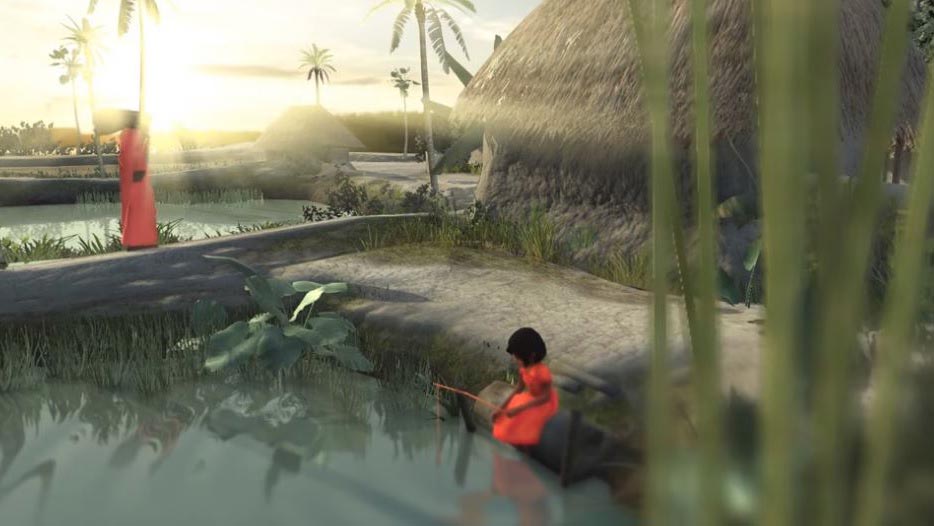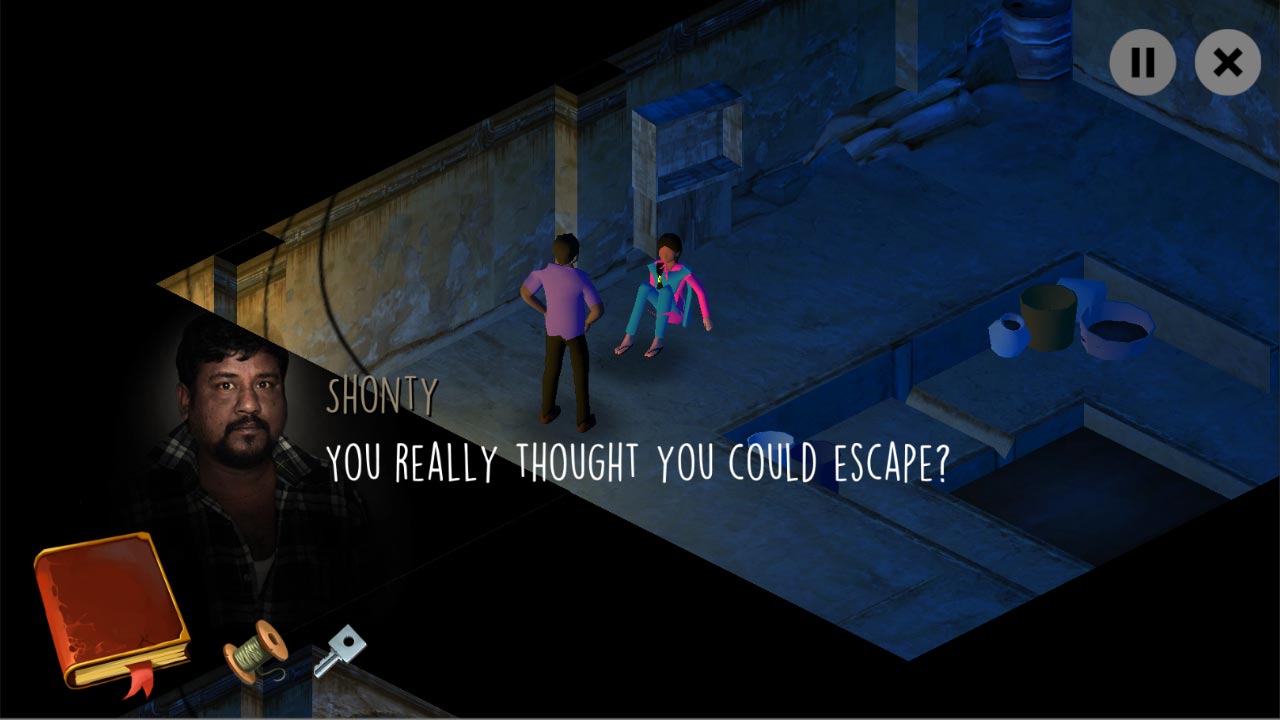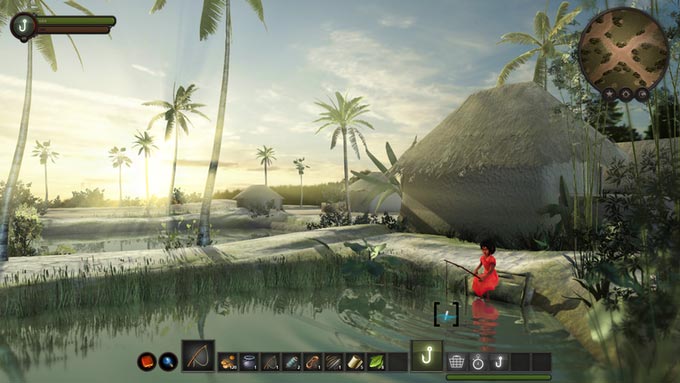
Missing Puts You in the Shoes of a Trafficked Girl
This is one of a few pieces on this site rescued from the digital scrapheap, originally published for a site that’s no longer online. I’ll begrudgingly remove if any shadowy publishing types compel me to relinquish what’s rightfully theirs, despite having unceremoniously binned it themselves, but come on. That’d just be silly.
It’s presented as is, so you’ll have to forgive any outdated references or generally shoddy writing.
–
Satyajit Chakrabarty never really thought about India’s sex trafficking problem, until he was approached to make a game about it. He was precisely the sort of person that artist and photographer Leena Kejriwal had been trying to find since 2010.
Kejriwal’s photography has a sociological dimension, and it was during one of her journeys through Kolkata that she first ventured into a red light district. In her book of collected photographs of the city, the cover depicted a red wall – an indicator of the red light districts particular to certain Indian regions.
“Being a woman, a girl at some point in time, the intense vulnerability of a girl in that space hits me in the guts,” says Kejriwal. “It’s something I haven’t been able to forget.”
In 1990, The New York Review of Books published a now-famous article by Indian economist Amartya Sen. ‘More Than 100 Million Women Are Missing’ was the striking title, and it examined the worldwide population statistics to reveal “a terrible story of inequality and neglect leading to the excess mortality of women,” particularly in Asia. More recent statistics suggest 63 million missing women in India alone, an estimate that some would call conservative.

“Foeticide, infanticide, malnutrition, dowry, sex trafficking – he covers the whole multitude,” reflects Kejriwal. When she decided to embark on an art project to highlight the pressing issue of sex trafficking, Missing was the simple yet powerful name she decided upon. Kejriwal chose a female silhouette as a symbol which she says “denotes a black hole into which millions of girls disappear from the face of the earth.” The artworks themselves – pitch black, several feet high, constructed from iron sheets – continued the theme.
“I was doing these complicated installations since 2010, and until 2013 they were travelling all over Europe,” Kejriwal says. “The installations were very complicated, and they weren’t talking about something pleasant, so my audience was there because they were able to take it or understand the work.”
“But I had this deeper desire to talk to Indians, and to talk to the public. I didn’t want it to be in a gallery space.”
Indeed, Kejriwal’s work got coverage from home and abroad, but the amount of exposure she could generate from the traditional art world hit a ceiling. Determined to focus on the ‘public’ side of public art, she began a social media campaign.

A crowdfunding initiative followed, with Kejriwal pitching the first digital extension of the Missing project: an AR app that would allow people to scan any of her 10,000 silhouette stencils throughout India, granting some interactive content. But those who’d backed the campaign – mostly 25 to 30 year-olds – weren’t sold on the concept. Why would they download such an app and, even if they did, what would be the motivation to keep it?
Kejriwal had already begun scouting for local app developers by the time these questions emerged, but she didn’t hesitate to consider the feedback and change the approach to something much more ambitious. “It was going to be so ephemeral. On a phone for maybe five minutes, then gone. And I didn’t want that. I wanted something much more immersive.”
This took her in the unexpected direction of video games. “I’m not a gamer, but I think it’s an amazing space of interaction,” Kejriwal says. “I’d seen others get so excited about games.” So she switched her focus from local app developers to local game developers, and that’s when she met Satyajit Chakrabarty. She explained to him her vision for a game based around sex trafficking and its victims, but he wasn’t immediately convinced.
“I wasn’t sure games were supposed to be like this,” says Chakrabarty. “Games always dealt with fantasy, imagination, fun. I was shocked. That first meeting with Leena was overwhelming for me. I felt like games had some kind of handicap, some kind of restriction. I could not think of a project like that in games.”

Kejriwal eventually convinced him to take on the challenge, but the first order of business was to give him some understanding of what trafficking does to its victims. “He had no idea what I was talking about,” she recalls. “I took him to a red light, made him meet survivors, made him meet girls with real stories.”
Chakrabarty makes no bones about his prior ignorance of the subject, but he also believes that most people think like he did. “We don’t actually know what’s going on, because we avoid that portion of society,” he says. “That part is always hidden, and feared somewhat. We have a distorted understanding of this thing, so the actuality can be very shocking and direct.”
Above all else, the experience taught Chakrabarty that this couldn’t be a Hollywood story. He remembers it vividly: “When I talked to them, I asked one question: can you escape from that place on your own? She just looked me in the eyes and said: ‘you cannot.’ That intensity made me throw out all my game design and start it from scratch.”
The first Missing game was launched, a free to play title, in October 2016. That was a simple point-and-click adventure game in which you take the role of Champa, a girl who wakes up in an unfamiliar location before being forced into sex work. It’s still available on mobile and PC and, while it’s rough around the edges, remains a good introduction to the issues at hand.
The game has been downloaded more than 500,000 times worldwide, and the team continues to support it in the Indian subcontinent by adding support for new languages and vernaculars. The Bengali-language version has topped the Google Play games charts in Bangladesh, while 13 new vernacular versions have been recently rolled out.
But work on a second game, Missing: The Complete Saga, is now well underway following a successful Kickstarter. It promises to be a much more involved affair.
“In the first game, you just had to solve some environmental puzzles to get ahead with the narrative,” explains Chakrabarty. “In the next game, we are giving the player much more scope for exploration and a kind of openness.”
The ambitious concept takes the player character from childhood through to middle age. The game will feature more RPG elements, with skills to pick up and multiple pathways to explore. Unlike the first game it covers the character’s life before, during and after trafficking – trying to show that, for many of these women, their problems don’t begin and end with the traffickers.
“We recently had a girl who ran back to her trafficker because life in the village was so dreary,” says Kejriwal. “You can’t have a normal life.”
Like the first game, this one will be taken into Indian schools and used for educational purposes. This is its primary function: to raise awareness in the country, and to make children vigilant of trafficking and its threat. After all, Kejriwal says, the average age of a trafficked girl is between nine and twelve.
“Our whole cry is ‘end demand’,” ends Kejriwal. “And you can only do that when you start telling people how they are related to that girl who’s standing there.”
